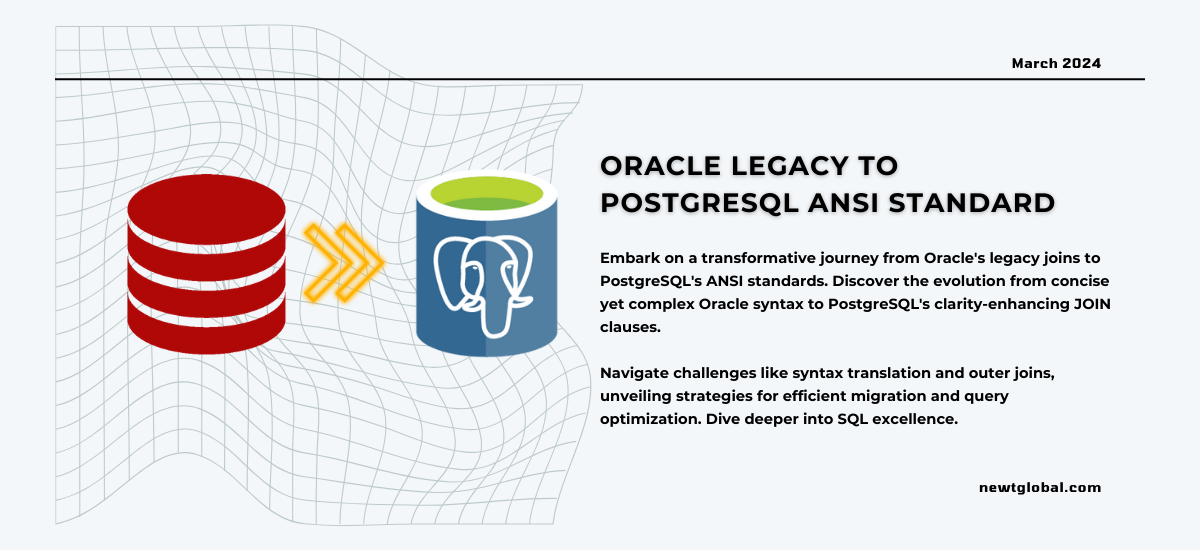
The SQL join is an important idea in databases. It helps to combine data from different tables when you’re asking questions. When moving from Oracle’s old way of joining tables to PostgreSQL’s new way, you’re following a standard called ANSI SQL. This change is a big part of moving databases from Oracle to PostgreSQL. Oracle has a long history and uses an old join style that has been around since SQL started. But newer databases like PostgreSQL prefer the ANSI SQL join style because it’s clearer and more powerful. This shift not only shows how SQL is changing but also affects how databases move from Oracle to PostgreSQL. It brings both challenges and opportunities for database experts.
This blog talks about moving from Oracle to PostgreSQL, especially focusing on how joins have evolved from old to new.
The Old Way in Oracle: Legacy Joins
In Oracle, you could join tables without using the JOIN keyword directly. Instead, you’d use conditions in the WHERE clause to show how tables are related. For example:
SELECT employees.name, departments.name
FROM employees, departments
WHERE employees.department_id = departments.id;
This method is short but can make queries hard to read, especially with many joins or outer joins, which might hide how tables are related.
Using the ANSI Standard in PostgreSQL
The ANSI SQL standard brings in explicit JOIN clauses, making SQL queries easier to read and manage. This way, join conditions are separate from the WHERE clause, making queries clearer, especially with complex joins. For example, the previous query in ANSI standard would look like this:
SELECT employees.name, departments.name
FROM employees
INNER JOIN departments ON employees.department_id = departments.id;
This style clearly shows the join operation, making it easier to understand and less likely to have mistakes.
Challenges in Migration and Solutions
-
- Syntax Translation: Moving from Oracle to PostgreSQL means changing the old join style to the ANSI standard. Tools can help, but manual checking is often needed to ensure accuracy and performance.
- Outer Joins: Oracle’s old syntax for outer joins uses special symbols, while ANSI uses LEFT, RIGHT, or FULL OUTER JOIN. Converting these correctly keeps the meaning of queries.
- Performance: While ANSI joins are clearer, the migration is a chance to check and improve query speed. Databases may optimize queries differently, so testing and tuning in PostgreSQL is important.
Switching from Oracle’s old join style to PostgreSQL’s ANSI standard makes SQL code easier to read and follow. Though it can be tricky to translate complex joins, it leads to cleaner and faster queries. Following best practices and learning about optimization helps in a smooth transition, making the most of PostgreSQL.
Dive deeper into SQL excellence at newtglobal.com or reach out directly for bespoke migration support at marketing@newtglobalcorp.com. Transform your database queries into models of clarity and precision today.
Newt Global DMAP is a world-class product enabling mass migration of Oracle Db to cloud-native PostgreSQL Faster, better, cheaper.
